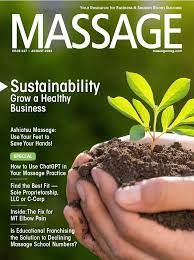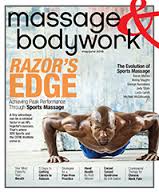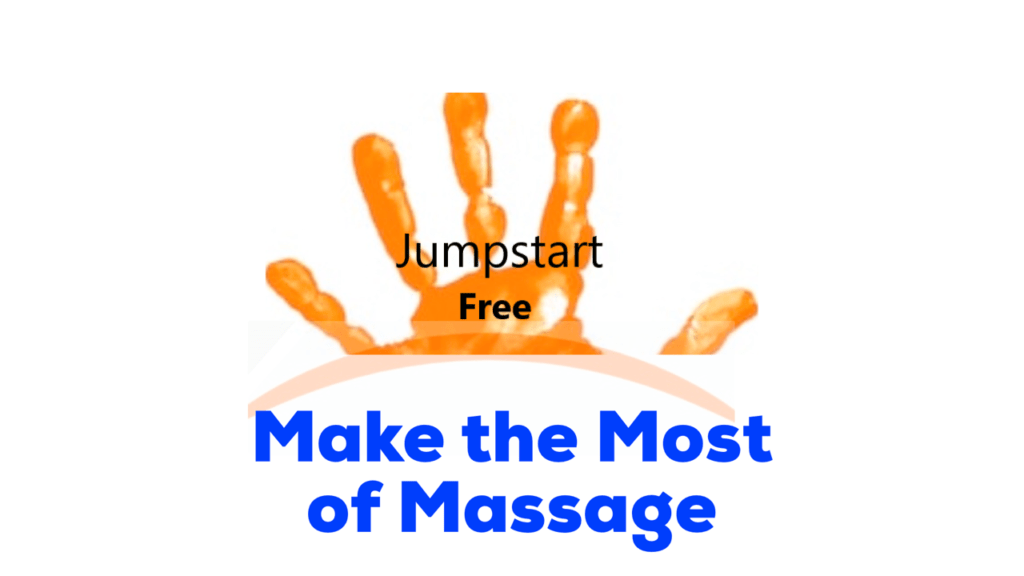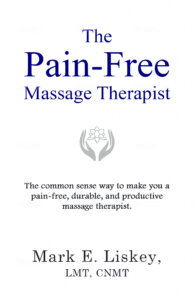How do you get repeat massage clients?
(1) Do a massage that sets you apart from the competition.
(2) Have solid therapeutic rapport.
(3) Have referral sources that send you new clients.
(4) Create a COVID-19 safe environment.
(5) Coordinate care.
(6) Follow up after the first massage.
Notice that none of the recommendations to get repeat massage clients had to do with discounting your price.
Why?
Because if you follow these recommendations, you’ll never need to entice clients to come back by shaving dollars off your price.
By the way, the recommendations above helped take my meh business to my Yay! business. You can read more about me here.
Okay, let’s get you some repeat clients by starting with:
(1) Do a massage that separates you from the competition.
Wait, don’t get your credit card out to sign up for the latest specialty massage class. When I’m talking about separating yourself from the massage therapists in your neighborhood, I’m talking about finding and highlighting what makes your massage unique.
That doesn’t mean you have to be a myofascial expert or have a firm understanding of reflexology. It means you have to find what people like about your massage and then take it to the next level.
If you want a shortcut to standing out from the crowd, try this: Get competent with pressure.
If your pressure is spot on (is appropriate and feels good to the client), clients will love your massage. Surprisingly, not all massage therapists get this. That is why nailing the pressure during a massage can be your differentiating factor.
And that’s the case for me. I’m competent with pressure and I’ve taken pressure to the next level by become competent with precise pressure, too.
Becoming competent with precise pressure gives me a leg up on my competition.
For one, I can specifically treat a tight/tender area with very precise pressure.
Also, precise pressure is sometimes the only way I can find the “That’s it!” spot. And precise pressure feels like more of complete and comprehensive treatment to clients as opposed to general pressure especially when working on specific tight and/or tender areas.
If you’ve backed off very precise pressure because it hurts your body or it feels intimidating, here’s how to change that.
Precise Versus VERY Precise
In general, I use general pressure to find areas of tender/tightness. To do this, I use a variety of body parts, from big (forearms and fists) to small (thumbs and fingers).
However, if I want to examine the tender/tight area in detail I use very precise pressure. And that’s often when I find the “That’s it!” spot. For precise pressure I use smaller body parts (thumbs, fingers, massage tools).
Here’s an example. Ali comes in with neck and shoulder pain. Using my knuckles around the scapula I find the locus of his pain area in his levator scapulae attachment (general pressure).
Next I start examining the area of pain in the levator scapulae attachment with my middle knuckle, looking for that exquisitely tender or tight spot (precise pressure).
What to Use to Find the “That’s It!” Spot
If it hurts your hands to work with precise pressure, I have three suggestions:
- Combine body parts.
- Stack and/or brace (support) body parts.
- Combine a massage tool with a body part.
Pictured below are my 3 favorite ways to deliver precise pressure.
Stacked Fingers/Thumbs
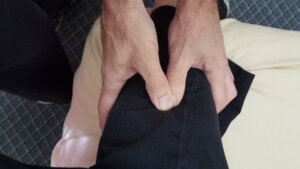
Try not to press. Instead lean into your fingers/thumbs. The bottom finger/thumb is the primary palpation vehicle.
Knuckle-Thumb
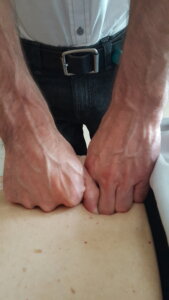
In this picture I’m directing my pressure into the middle finger of my left hand. You’ll notice that my right thumb is bent to fit in comfortably next to my left middle knuckle. This is not a mistake. In this case, my thumb’s primary role is for palpation, not for delivering pressure. My right thumb’s companion four fingers form a loose fist. They take most of the weight that I put on that hand, not my thumb.
Tool-Thumb
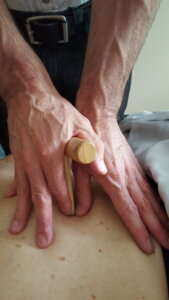
In this picture my thumb is a support, guide and the primary sensing instrument. I’m directing most of my “leaning” pressure into the tool, not my thumb.
That’s a taste of precise pressure which helps to differentiate me from my competition.
More about how to use massage tools to deliver precise pressure here.
But as I said in the beginning, what uniquely makes you “you”, doesn’t have to be what makes me “me”.
Finding Your Uniqueness
So, does your uniqueness have to be precise pressure?
No.
But your pressure has to be spot on to make clients happy—and right there you have the beginning of a uniqueness formula. Adding precise pressure is an easy next step.
That said, you don’t have to go the precise pressure route. Your uniqueness could be specializing in a modality or combining modalities or your specific take on a modality or something as basic as doing a fantastic relaxation massage.
The point is to find your uniqueness and make sure that it’s connected to happy clients. Once you know the two are connected you can hone that skill.
Next, let’s talk about therapeutic rapport.
(2) Have solid therapeutic rapport.
Have you had the experience of being referred to an expert in a field and that expert turns out to be a complete a-hole?
Bye-bye, right?
In massage you don’t need to be an a-hole for someone not to come back. It could be that you didn’t show enough care towards the client.
For instance, if you’re having a bad day, thinking about yourself and not the person on the table, that could just be enough for your client to pass over you next time for Kiesha who is good at massage AND is present during the session.
Being a good listener and a good conversationalist (when the client wants to talk) are also ways that allow you to really connect with a client.
In fact, my wife, Lisa (also a massage therapist) and I agree that a big reason why our clients keep coming back is due to how we interact and connect with them.
If you’re just starting out and having trouble connecting with a client, try this: A Quick Way to Connect to a Client.
Making your massage unique and having solid therapeutic rapport are two things that you must have to get a good flow of repeat clients, but if you want to make converting clients into repeat clients a whole lot easier, do this: Get referral sources to refer clients to you.
(3) Have referral sources that send you new clients.
A client who is referred to you from a referral source (a business/person who recommends your massage to her/his clients/customers/patrons) is primed to become a repeat client.
Why?
Because the referral source is endorsing you.
Don’t believe me?
Do a thought experiment. Margo does a Google search and you show up third in the local search. She goes down the list and calls the first two massage therapists but they don’t pick up. However, when she calls you, you do pick up. Do you expect that Margo will feel confident that she’ll get a good massage from you?
Maybe…I mean she only has your website to go on.
Okay, now imagine Tara the PT referred Margo to you because Tara personally knows you and respects your work—can you say potential client has been primed to come back to you?
It just makes sense that the more a referral source likes you and your work, the more she is going to talk you up to the person she’s sending your way, which makes that person a prime candidate to be a repeat client.
For more about creating referral source machines, go here: Stalking Bernie for Referrals.
So, I talked about how to get repeat clients during normal times, but how about during abnormal times, like during a pandemic.
Specifically, what can you do get repeat clients during COVID-19?
Simple.
Do this:
(4) Create a COVID-19 work-safe environment.
Creating a COVID-19-safe-as-possible work environment is not only the right thing to do, it’s a way to expand upon care and further deepen your connection with the client.
Oh, by the way, this care connection starts before the client even walks though our door.
Think about when a potential client hits your website. With our website I want the client to know that we’re taking her safety more seriously than any other outfit in town.
I’m not going to overwhelm website visitors with policy. I’m going to point out key safety features we’re employing, like forehead temperature checks, masks, disinfecting and limiting the number of people we have in the office at one time.
And I’m going to give potential clients clear direction on how the appointment will go down so that there is no confusion or ambiguity in their minds.
This is the COVID-19 safety video that I made for our website:
So, with the video and the verbiage on our website I’m addressing safety barriers that may be preventing that person from calling:
(1) Is massage safe?
(2) Is this place safe?
(3) How safe is this place compared to other places?
This is the start of our care connection that will continue to build once the client arrives at our office.
Does above-and-beyond safety and care during COVID-19 guarantee a repeat client?
Not necessarily, but it makes the checkmark in the therapeutic rapport box a big one.
I have two more recommendations that have helped my repeat client average. The first is…
(5) Coordinate care.
By coordinating care I mean if the client comes to you for a specific pain issue, ask the client if it would be okay if you reach out to the other health professionals who are helping her with that specific issue.
That means you could be contacting orthopedists, podiatrists, PTs, PTAs, personal trainers, exercise physiologists and chiropractors.
The majority of health professionals that I coordinate care with are PTs, PTAs, chiropractors and personal trainers.
I get a huge positive response when I ask the client if I can coordinate care with the health professional on his pain issue case, and I often get referrals from that health professional.
Lastly, I need to mention…
(6) Follow up after the first massage.
By following up after the first massage (2 to 3 days after) you open the door for a dialogue about the massage session the client just had with you.
It’s at this point that you are more likely to get a candid reaction about the massage.
Nine out of ten times you will get a positive response. And the fact that you called after the massage shows the client that you care.
Again, think cumulative not specific. In other words, lots of caring actions add up. Keep heaping on the caring and the choice of where the client wants to go for a massage becomes a no-brainer.
How to Get Repeat Clients in a Nutshell
Getting repeat clients is not rocket science, but it does take some targeted actions.
First, you need to know what separates you from your competition. It doesn’t have to be a technique or modality. It can simply be that you deliver great pressure during a relaxation massage.
Also, throw in some good ole therapeutic rapport. Listen. Be a good conversationalist when appropriate. Coordinate care and follow up after the first massage session.
Find referral sources that consistently send you clients.
And during COVID-19 create a safe as possible environment and let clients know this on your website and in your advertising.
Getting repeat clients does not happen because you did one thing right. You get repeat clients by doing key things (what I mentioned above) competently.
Extra Help
If you’re just starting out and/or making less than 30K as a massage therapist, check out this free course to get your repeat clients rolling: Jumpstart.
If you’re trying to take your meh business to a Yay! business, go here: Accelerator Program.
If you want to get my latest info for free, sign up below:-)

